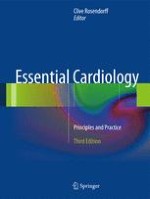Abstract
Diabetes has become a worldwide epidemic. The majority of patients with diabetes ultimately die from complications of cardiovascular disease. The mechanisms underlying macrovascular disease in diabetes are incompletely understood but likely involve inflammation and alterations of the endothelium and vascular smooth muscle. An increasing proportion of patients hospitalized with acute coronary syndromes will have diabetes. These patients tend to have worse outcomes and are less likely to receive guideline-based therapy. Prevention of cardiovascular disease in both type 1 and type 2 diabetes is an area of increasing focus and complexity. Both diabetes and prediabetes commonly carry with them cardiovascular risk factors including dyslipidemia, hypertension, hyperglycemia, obesity, and sedentary lifestyle. Intensive glucose control has not been shown to improve macrovascular outcomes in patients with diabetes. A number of explanations for this counterintuitive data have been proposed, and ongoing studies are needed for further clarification. New antidiabetic drugs and therapeutic strategies are being pursued, including their effects on macrovascular outcomes. Multifactorial risk factor modification appears to be particularly effective in preventing cardiovascular events, underscoring the critical need for careful management of risk factors in patients with diabetes.
